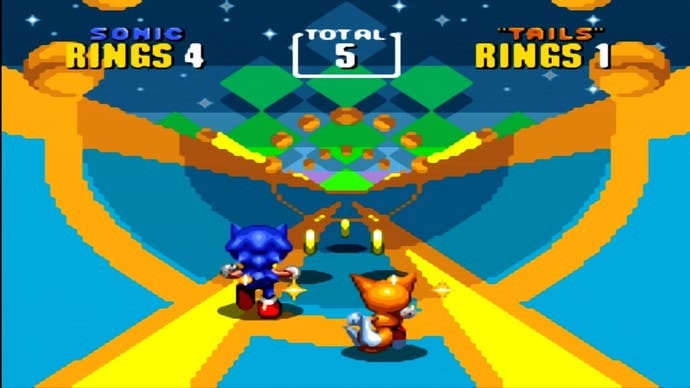SEGA Mega Drive Ultimate Collection
This takes ages.
Nobody talks of retro films or retro music. Read a novel by Tolstoy or a passage from the Bible and you aren't retro-reading, just as sitting down to a DVD of Citizen Kane or Lost in Translation would never be referred to as retro-viewing. And yet our industry is still yet to reach the point where it can refer to eras and movements rather than retrogames and retrogaming. Moreover, the process of buying a film by Orson Welles or Sophia Coppola is virtually the same today, despite the fact that more than fifty years separates their birthdates and best work. If Madonna and Tchaikovsky CDs are separated by metres in the local music store, mere inches on iTunes, why is it nearly impossible to buy a new copy of any videogame released anytime before yesterday?
It's a frustration that's been slightly eased, albeit in a patchwork, unsatisfactory way, by PSN, XBLA and WiiWare. Here it's possible to pick out a specific videogame from yesteryear and pay a few pounds for the privilege of owning the ROM, albeit with little guarantee of how good the emulation is going to be and without any of the enjoyment that comes from owning the box and manual. It's certainly convenient when you want to dip back into your youth in a moment of drunken sentimentality. But what single download releases can't offer is a broader snapshot of a console's library, a sense of where each game sits with other titles of the era or, indeed, the handiness of having all of your "retro games" in one place, restored with a consistent degree of care and context.
Backbone Entertainment, maker of the recent and quite brilliant Super Street Fighter II Turbo HD Remix, is aiming to do just this with the boastfully named Mega Drive Ultimate Collection. Bundling together 40 of the system's better titles and presenting them with high-resolution artwork and a slew of developer interviews, its title bespeaks its ambition: to provide the definitive collection of SEGA-published Mega Drive games yet offered on a contemporary system.

Of course, with only 40-odd games represented from the Mega Drive's far bigger library, it is, in the strict sense, anything but Ultimate. But SEGA has done a good job of selecting a wide range of titles and genres and while there are some notable omissions, the collection offers a reasonable overview of the system's highlights with some generous bonuses. From Comix Zone, Columns, Dr. Robotnik's Mean Bean Machine and Flicky through to the full set of 16-bit Phantasy Star and Shining Force titles, the quality games in the collection are still eminently playable.
Backbone's presentation is assured, a sharp menu screen interface incorporating into its design the console's retro-future lights and fonts, presenting the full range of games on the disc in an easy-to-browse format. You can rate games from one to five 'power lights' and then filter the list by your ratings, a useful homebrew way of sorting the wheat from the chaff. Each game enjoys its own save file and you can save any game at any point (as in an emulator) to help you get through some of the less-forgiving, which have little time for the contemporary gamer's shortcomings.
Visually every game is available in the original 4:3 screen ratio or in a widescreen option. It's possible to stretch and move the screen around so you can find the best balance between authenticity and big-screen comfort. The box claim that the games are now in HD is misleading at best, however: nothing here has been redrawn (as was the case with SSIITHDR), rather simply upscaled to HD resolutions. Viewed on an HD television the games naturally look worse than they did on the original hardware through a CRT television, and the option for a scanline filter would have been welcome.

